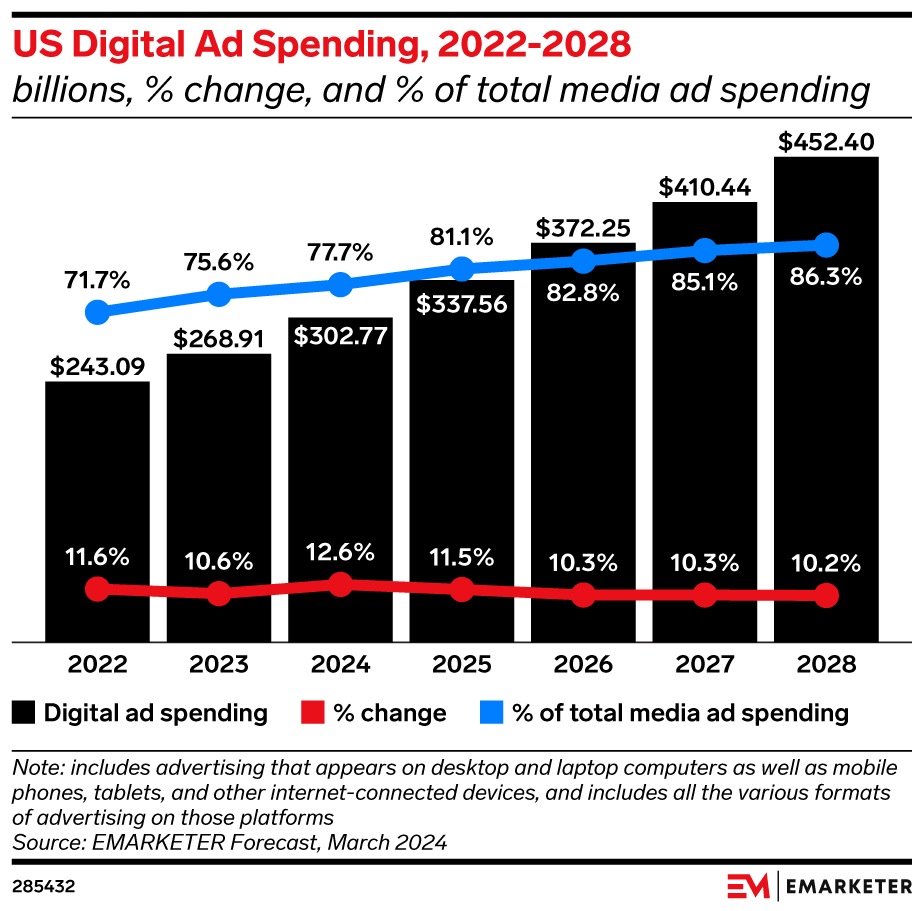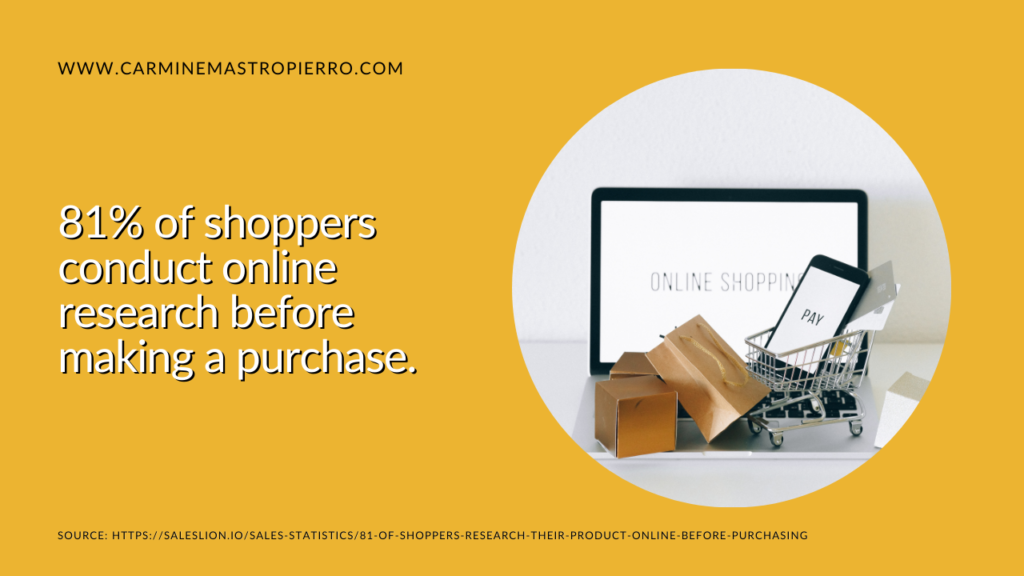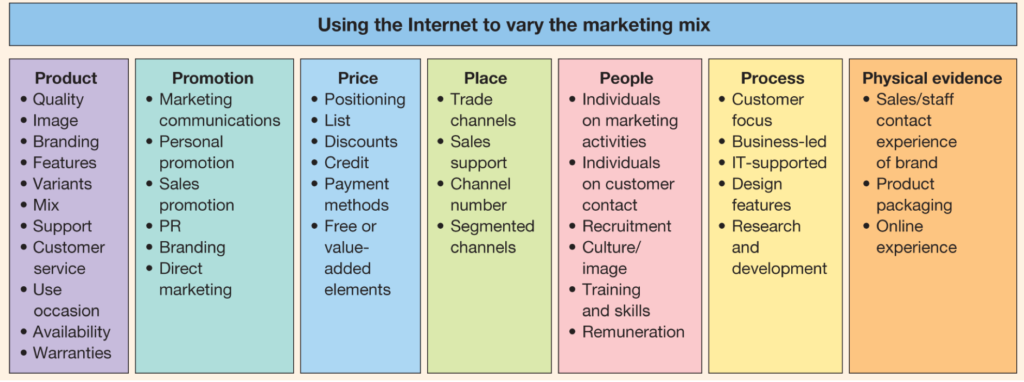Ignoring the fundamentals of marketing can hurt your business. The Four Ps of Marketing—Product, Price, Place, Promotion—aren’t just textbook theories; they’re the backbone of any successful marketing strategy.
Many companies get so caught up in the latest marketing fads that they forget to nail down these core elements. It’s good to stay up to date, but you can’t ignore the fundamentals.
Whether you’re launching a new product or trying to boost sales for an existing one, getting these elements right is crucial. They are about actionable steps you can take right now to optimize your marketing efforts.
Let’s explore the Four P’s of Marketing together.
What Are the Four Ps of Marketing?
Let’s break it down: the Four Ps of Marketing—Product, Price, Place, Promotion—are the cornerstones of any effective marketing strategy. They’re the essential elements that define how you take your product or service to market.
Product
First up is Product. This isn’t just about what you’re selling; it’s about how your offering meets the needs or solves the problems of your target audience. In a market where 89% of companies compete primarily on customer experience, your product needs to stand out. Ask yourself:
- What makes your product unique?
- How does it provide value to the customer?
- What features and benefits set it apart from competitors?
Price
Next is Price. Setting the right price isn’t just about covering costs and adding a markup. It’s a strategic decision that affects how your product is perceived. Consider:
- What is the perceived value of your product?
- How does your pricing compare to competitors?
- Can you implement pricing strategies like discounts or bundles to attract more customers?
Place
Third is Place. This is all about distribution—how you get your product into the hands of the customer. With the rise of e-commerce, you need to be where your customers are. Think about:
- Which channels are most effective for reaching your target audience?
- Can you leverage online platforms, physical stores, or a mix of both?
- How can you optimize your supply chain for faster delivery?
Promotion
Finally, we have Promotion. This is how you communicate your product’s value to the world. In an era where digital ad spending is projected to reach $452 billion by 2028, effective promotion is more critical than ever. Ask yourself:
- What messaging resonates with your audience?
- Which promotional channels—social media, email marketing, content marketing—are most effective?
- How can you measure the success of your promotional efforts?

Bringing It All Together
Understanding these marketing principles isn’t just academic; it’s practical. The marketing mix of the Four Ps provides a marketing framework that helps you align your strategies and tactics. By carefully considering each element, you create a cohesive plan that addresses every aspect of bringing your product to market.
Price: Setting the Right Value
Let’s talk pricing—one of the most critical yet challenging elements of your marketing mix. Get it right, and you’re golden. Get it wrong, and you could be leaving serious money on the table.
Price isn’t just a number; it’s a statement about your product’s value. Pricing directly influences how consumers perceive your product and can significantly impact your sales volume. In fact, pricing is often a primary factor influencing purchasing decisions.
Understanding the Role of Pricing
Price directly affects your bottom line. While product, promotion, and place incur costs, pricing is the only element that generates revenue. It’s essential to align your pricing strategy with your overall business goals and the value you provide to customers.
Pricing Strategies
There are several pricing models you can adopt, depending on your objectives:
- Cost-Plus Pricing: Adding a standard markup to the cost of the product. Simple but may not consider consumer perception fully.
- Value-Based Pricing: Setting prices based on the perceived value to the customer rather than on the cost of the product. Effective when your product offers unique benefits that customers are willing to pay more for.
- Penetration Pricing: Introducing your product at a low price to gain market share quickly. Be cautious; while it can attract customers, it may also set a low-value perception.
- Price Skimming: Starting with a high price and lowering it over time. Useful for innovative products with little initial competition.
- Dynamic Pricing: Adjusting prices based on current market demands and conditions. E-commerce platforms often use this to stay competitive.
Factors Influencing Price
Several elements come into play when setting your price:
- Market Demand: Understanding price elasticity is key. If demand for your product is sensitive to price changes, even small adjustments can have significant effects.
- Competition: Keep an eye on your competitors’ pricing. If you’re priced higher without offering additional value, customers might opt for alternatives.
- Costs: While covering your costs is essential, customers are more interested in the value they receive. Balancing cost recovery with customer value perception is crucial.
- Brand Positioning: Your price should reflect your brand’s market position. Premium brands can command higher prices due to perceived higher value.
Real-World Examples
Consider Apple’s pricing strategy. Despite premium prices, they maintain strong sales because customers perceive high value in their products. On the flip side, companies like Walmart focus on a low-price strategy to attract a broader customer base seeking affordability.
Actionable Steps
- Conduct Market Research: Use surveys and data analysis to understand what your target audience is willing to pay.
- Analyze Competitors: Evaluate where your product stands in the market and adjust your pricing accordingly.
- Experiment with Pricing: Test different pricing models to see what resonates with your customers and impacts your sales positively.
- Monitor and Adjust: Regularly review your pricing strategy to ensure it remains aligned with market conditions and your business objectives.
Place: Making Your Product Accessible
Let’s face it: if your customers can’t find your product, they can’t buy it. That’s where Place comes into play in your marketing mix. It’s all about making your product or service available to your target audience at the right location and at the right time. In today’s digital and global marketplace, this means more than just stocking shelves; it’s about strategic distribution and accessibility.
Understanding ‘Place’ in the Marketing Mix
Place isn’t just a physical location anymore. With the rise of e-commerce and mobile shopping, it’s any point where a customer can engage with your product—be it online or offline.
Distribution Channels Matter
Choosing the right distribution channels is crucial. You need to be where your customers are, whether that’s online marketplaces, retail stores, or direct sales through your website.
- Direct Sales: Selling directly to consumers gives you full control over the customer experience. This can be through your own website or a brick-and-mortar store.
- Online Marketplaces: Platforms like Amazon, eBay, and Etsy have massive customer bases. Listing your products there can significantly boost visibility.
- Retail Partnerships: Placing your products in established retail stores can tap into their existing customer base. However, this often involves negotiations and sharing a portion of your profits.
Leveraging Digital Channels
With 81% of shoppers conducting online research before making a purchase, having a strong online presence is non-negotiable.

- Optimize for Mobile: Ensure your website is mobile-friendly to capture this audience.
- Social Media Selling: Platforms like Instagram and Facebook aren’t just for engagement—they’re sales channels.
- SEO and Local Search: Optimize your online content so that customers can find you easily. Local SEO is especially important if you’re targeting specific geographic areas.
Physical Accessibility
Don’t underestimate the power of physical location, especially if your product benefits from tactile experiences.
- Pop-Up Shops: Temporary retail spaces can generate buzz and allow customers to experience your product firsthand.
- Strategic Store Locations: Placing your stores in high-traffic areas increases visibility and foot traffic.
- Distribution Centers: Having warehouses or distribution centers closer to key markets can reduce shipping times and costs.
Supply Chain Efficiency
An efficient supply chain ensures that your product is not just available but also delivered in a timely manner.
- Inventory Management: Use data analytics to keep optimal stock levels. Staying on top of inventory is crucial.
- Logistics Partnerships: Collaborate with reliable shipping and logistics companies to ensure smooth delivery. Fast shipping can increase conversions and customer loyalty.
- Fulfillment Options: Offering options like curbside pickup or same-day delivery can enhance customer satisfaction.
Global vs. Local Reach
Decide whether to focus on local markets, go global, or find a balance between the two.
- Local Focus: Tailoring your approach to local markets can build stronger community relationships and brand loyalty.
- Global Expansion: If you’re ready to scale, tapping into international markets can exponentially increase your customer base. Just remember to localize your marketing efforts to resonate with different cultures.
Omnichannel Strategy
An omnichannel approach provides a seamless customer experience across all platforms.
- Consistency is Key: Ensure your branding and messaging are uniform across all channels, whether it’s your website, social media, or physical stores.
- Integrated Systems: Use CRM and inventory management systems that sync across platforms to provide real-time information to customers.
Actionable Steps
- Identify Where Your Customers Are: Use market research to determine the channels your target audience frequents.
- Optimize Each Channel: Don’t just be present—excel. Whether it’s user experience on your website or customer service in-store, make each interaction count.
- Monitor and Adapt: Use analytics to track performance across channels. If something isn’t working, be prepared to pivot.
Why ‘Place’ Matters
Ignoring the ‘Place’ component can sabotage even the best product and marketing efforts. By making your product accessible where and when your customers want it, you remove barriers to purchase and enhance the overall customer experience.
Promotion: Communicating Your Value Proposition
Let’s get straight to it: you could have the most amazing product or service, but if no one knows about it, you’re not going anywhere. That’s where Promotion steps in within your marketing mix.
It’s all about effectively communicating your value proposition to your target audience. In a world where the average consumer is bombarded with over 5,000 marketing messages per day, standing out is more challenging—and more critical—than ever.

Understanding Promotion in the Marketing Mix
Promotion isn’t just about advertising; it’s the comprehensive strategy you use to get your message across through various channels. It’s how you inform, persuade, and remind consumers about your product or service. The goal is simple: to generate a positive customer response and drive sales.
The Promotional Mix
To craft an effective promotional strategy, you need to understand the tools at your disposal:
- Advertising
- What it is: Paid, non-personal communication through various media channels.
- Channels: Television, radio, print media, online ads, social media.
- Why it matters: Consistent advertising can increase brand awareness.
- Public Relations (PR)
- What it is: Building a positive image and strong relationships with the public.
- Activities: Press releases, events, sponsorships, community involvement.
- Why it matters: Effective PR can boost sales more than advertising alone.
- Sales Promotion
- What it is: Short-term incentives to encourage immediate purchase.
- Examples: Discounts, coupons, flash sales, buy-one-get-one-free offers.
- Why it matters: Sales promotions can increase short-term sales by temporary lifting demand.
- Personal Selling
- What it is: Direct interaction between your sales team and potential customers.
- Methods: Face-to-face meetings, telemarketing, video calls.
- Why it matters: Personalized interaction can improve conversion rates.
- Direct Marketing
- What it is: Direct communication aimed at generating a response.
- Channels: Email marketing, SMS campaigns, direct mail.
- Why it matters: Email marketing delivers a great ROI.
- Digital Marketing
- What it is: Promoting products or services using digital channels.
- Channels: SEO, content marketing, social media marketing, PPC advertising.
- Why it matters: With many consumers researching online, promotion digitally becomes more important.
Crafting an Effective Promotion Strategy
1. Identify Your Target Audience
- Segmentation: Break down your market into specific groups based on demographics, psychographics, and behavior.
- Buyer Personas: Create detailed profiles to understand their needs, preferences, and pain points.
2. Develop a Clear Message
- Value Proposition: Clearly articulate the unique benefits your product offers.
- Consistency: Maintain a consistent message across all channels to strengthen brand recognition.
3. Choose the Right Channels
- Multi-Channel Approach: Don’t put all your eggs in one basket. Utilize a mix of channels where your audience is most active.
- Channel Alignment: Match your promotional activities with the habits of your target audience.
4. Set a Budget
- Allocate Resources: Determine how much you can spend and allocate funds to channels that offer the best ROI.
- Monitor Spending: Keep track to ensure you’re staying within budget while achieving desired results.
5. Implement and Monitor
- Launch Campaigns: Roll out your promotional activities according to your plan.
- Analytics: Use tools like Google Analytics, Facebook Insights, or email marketing software to track performance.
6. Adjust and Optimize
- Data-Driven Decisions: Use the data collected to refine your strategies.
- A/B Testing: Experiment with different messages, visuals, and offers to see what resonates best.
Utilizing Content Marketing in Promotion
Content marketing deserves special attention. Companies that prioritize blogging efforts are 13 times more likely to see positive ROI.
- Educational Content: Create blogs, ebooks, and webinars that provide value to your audience.
- SEO Optimization: Incorporate relevant keywords to improve your search engine rankings.
- Social Sharing: Promote your content on social media platforms to increase reach.
Leverage Social Media
With billions of active users on platforms like Facebook, Instagram, LinkedIn, and Twitter are gold mines for promotion.
- Engage with Followers: Respond to comments and messages to build relationships.
- Paid Advertising: Use targeted ads to reach a broader or more specific audience.
- Influencer Partnerships: Collaborate with influencers who align with your brand values.
Don’t Forget About Mobile
Most traffic comes from mobile devices. Optimizing for smart phones ensures you reach a larger market.
- Mobile-Friendly Content: Ensure your emails, website, and ads are optimized for mobile viewing.
- SMS Marketing: Consider text message campaigns for promotions and updates.
Measuring Success
- Key Performance Indicators (KPIs): Define what success looks like—click-through rates, conversion rates, engagement metrics.
- Regular Reporting: Set up dashboards to monitor these KPIs in real-time.
- Customer Feedback: Use surveys and reviews to gain insights into customer satisfaction.
Actionable Steps
- Audit Your Current Promotion Efforts: Identify what’s working and what’s not.
- Set SMART Goals: Specific, Measurable, Achievable, Relevant, Time-bound objectives keep you focused.
- Stay Updated on Trends: The promotional landscape changes rapidly; stay agile.
Why Promotion is Essential
Promotion bridges the gap between your product and your customers. It’s not just about making a sale; it’s about building a relationship. Considering that acquiring a new customer can cost five times more than retaining an existing one, effective promotion also plays a vital role in customer retention.
Integrating the Four Ps into Your Marketing Strategy
Understanding each of the Four Ps of Marketing is crucial, but the real power comes when you weave them together into a cohesive marketing strategy.
Let’s break down how to align Product, Price, Place, and Promotion to create a marketing mix that not only reaches your target audience but also drives them to take action.
1. Start with a Comprehensive Marketing Plan
A well-crafted marketing plan serves as your roadmap. It should detail how each of the Four Ps will work together to achieve your business goals.
- Actionable Step: Outline your objectives, target market, and key performance indicators (KPIs) before diving into the specifics. This ensures all elements are aligned from the get-go.
2. Ensure Consistency Across All Four Ps
Inconsistency can confuse customers and weaken your brand. Each element of your marketing mix should reinforce the others.
- Product and Price Alignment: Your pricing should reflect your product’s quality and value proposition. For example, a premium product warrants a higher price point.
- Place and Promotion Synergy: Promote your product in places where your target audience is most active. If they’re on Instagram, your promotional efforts should be there too.
- Actionable Step: Audit all marketing materials and channels to ensure they convey a consistent message and brand voice.
3. Leverage Market Research
Data is your friend. Use market research to inform decisions in each of the Four Ps.
- Product: Identify gaps in the market or unmet customer needs.
- Price: Understand what your target audience is willing to pay.
- Place: Discover where your customers prefer to shop—online, in-store, or both.
- Promotion: Find out which marketing channels resonate most with your audience.
- Actionable Step: Conduct surveys, focus groups, or analyze customer data to gain insights that will shape your strategy.
4. Adapt to Digital Marketing Channels
The digital landscape has transformed how we approach the Four Ps. Integrate digital strategies to stay competitive.
- Product: Consider digital products or add online features to physical products.
- Price: Use online tools to adjust pricing dynamically based on demand and competition.
- Place: Expand your reach through e-commerce platforms and mobile apps.
- Promotion: Utilize SEO, content marketing, and social media advertising to amplify your message.
- Stat to Consider: Businesses that adopt digital marketing strategies can see revenue growth up to 2.8 times higher than those that don’t.
5. Monitor Performance and Be Ready to Pivot
Markets change, and so should your strategy. Regularly assess how each P is performing.
- Actionable Step: Set up analytics dashboards to track KPIs related to each element—sales figures for Product, profit margins for Price, traffic sources for Place, and engagement metrics for Promotion.
- Stat to Consider: Companies that routinely analyze their marketing performance are more effective at reaching their goals.
6. Incorporate Customer Feedback
Your customers are your best critics and advocates. Use their feedback to refine your marketing mix.
- Product: Make improvements or add features based on user suggestions.
- Price: Adjust pricing if customers perceive it as too high or low.
- Place: If customers prefer shopping online, focus more on e-commerce channels.
- Promotion: Tailor your messaging based on what resonates with your audience.
- Actionable Step: Implement feedback loops via surveys, reviews, or social media interactions.
7. Consider the Extended Marketing Mix
For service-based businesses, the Extended Marketing Mix adds three more Ps: People, Process, and Physical Evidence.

- People: Train your team to deliver exceptional customer service.
- Process: Streamline operations to improve efficiency and customer satisfaction.
- Physical Evidence: Use tangible elements like branding and packaging to enhance customer experience.
- Actionable Step: Evaluate your business to see if these additional Ps can provide a competitive edge.
8. Align with Overall Business Objectives
Your marketing efforts should support your broader business goals.
Actionable Step: Regularly sync with other departments—like sales and product development—to ensure everyone is moving in the same direction.
9. Stay Agile and Adaptive
The only constant in marketing is change. Be prepared to adjust your strategy in response to market trends and consumer behavior.
Actionable Step: Keep an eye on industry news, competitor actions, and technological advancements to stay ahead of the curve.
10. Measure, Learn, and Optimize
Data without action is meaningless. Use what you learn to refine your marketing mix continually.
Actionable Step: Conduct A/B tests on promotional messages, try different pricing strategies, or explore new distribution channels to see what works best.
Bringing It All Together
Integrating the Four Ps of Marketing isn’t a one-time task—it’s an ongoing process that requires attention and adaptability. By ensuring each element supports the others, you create a robust marketing framework that can withstand market shifts and evolving consumer preferences.
Wrapping Up The Four Ps of Marketing
Mastering the Four Ps of Marketing isn’t just theoretical—it’s a practical roadmap to business success. In today’s competitive landscape, understanding and implementing the right marketing mix of Product, Price, Place, and Promotion can set your business apart.
But knowledge without action is meaningless. Here’s what you can do right now:
- Evaluate Your Product: Ensure it aligns with customer needs and stands out in the market.
- Reassess Your Pricing Strategy: Make sure it’s competitive yet reflects the value you offer.
- Optimize Your Distribution Channels (Place): Be where your customers are, whether that’s online, in-store, or both.
- Enhance Your Promotional Efforts: Use the right channels to communicate your message effectively.
By thoughtfully applying these marketing concepts, you’re building a robust marketing framework that can adapt and thrive.
Schedule a free consultation to learn more about my marketing services that will help your business drive more revenue.














